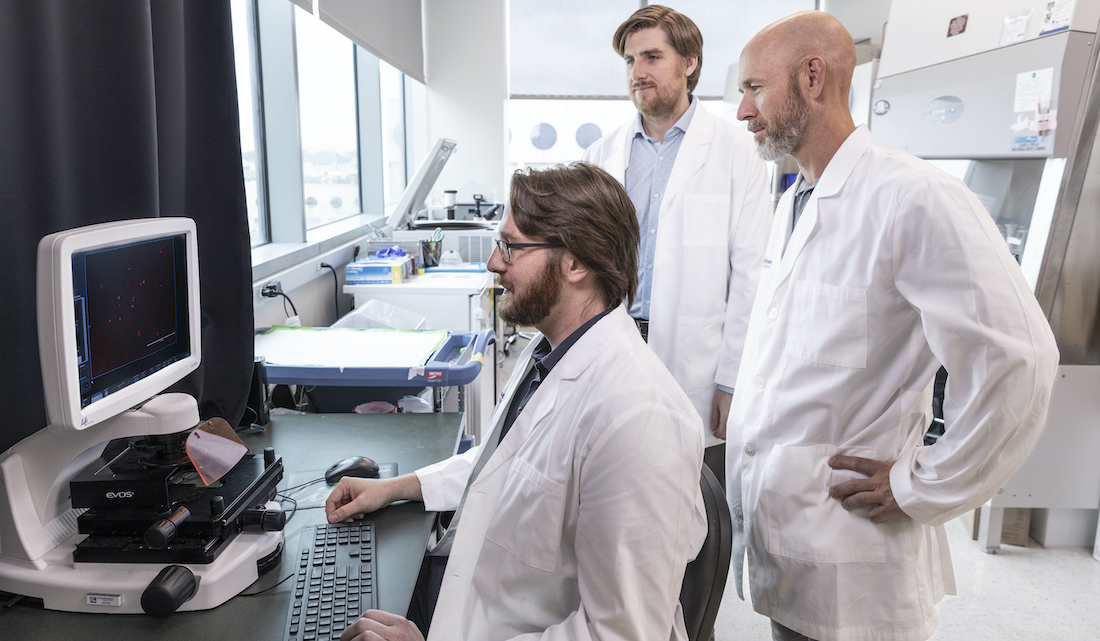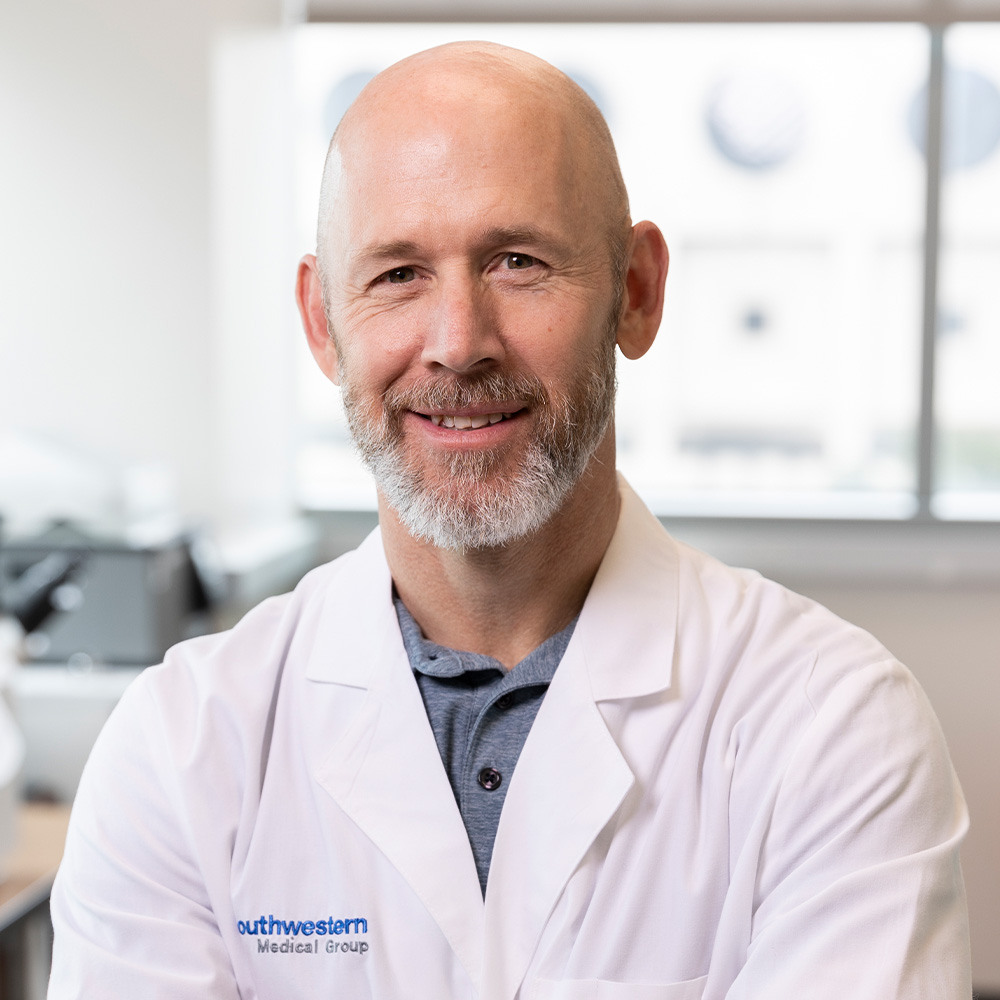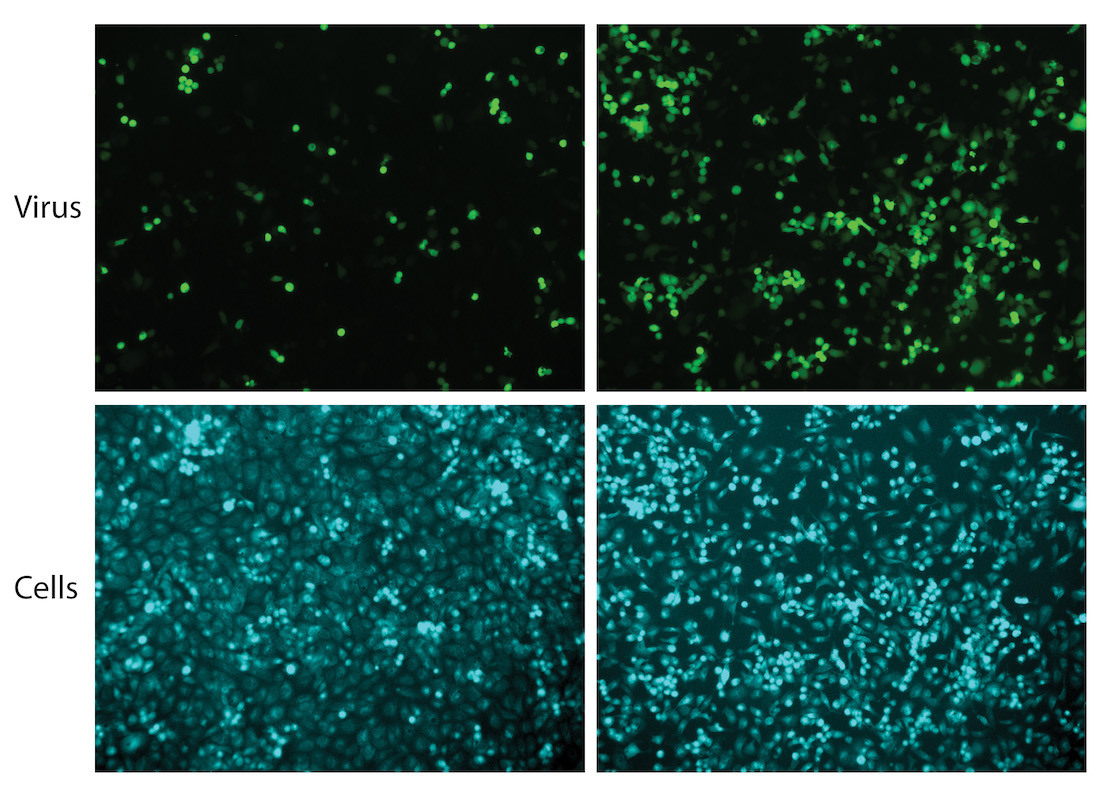Bacterial proteins shed light on antiviral immunity
UTSW labs team up on study uncovering two ancient antimicrobial proteins present in a broad range of organisms

DALLAS – May 16, 2024 – A unique collaboration between two UT Southwestern Medical Center labs – one that studies bacteria and another that studies viruses – has identified two immune proteins that appear key to fighting infections. The findings, published in PLOS Pathogens, could lead to new strategies for treating microbial infections and even cancer, the authors said.

“By studying how bacterial proteins can promote viral replication, we discovered new factors that block virus replication in organisms ranging from moths to humans,” said Don Gammon, Ph.D., Assistant Professor of Microbiology at UT Southwestern. Dr. Gammon co-led the study with Neal Alto, Ph.D., Professor of Microbiology and a member of the Harold C. Simmons Comprehensive Cancer Center at UTSW, and first author Aaron Embry, B.A.Sc., a graduate student researcher mentored in the Gammon Lab and the Alto Lab.

Dr. Gammon’s lab uses molecules known as immune evasion proteins produced by viruses. Studying these proteins, which disable portions of the immune system to allow viruses to replicate in cells, can shed light on how the immune system targets viral infections. Like viruses, some bacteria also replicate inside the cells of other organisms with the help of proteins known as effectors, many of which thwart immune responses, Dr. Alto explained. Identifying bacterial effector proteins is one focus of his lab.
Drs. Gammon and Alto reasoned that by combining their expertise, they might be able to identify immune mechanisms that organisms use to tackle both bacterial and viral infections. They used a genetic technique to prompt moth cells to individually produce 210 bacterial effectors that are collectively produced by seven different bacterial pathogens. They then tested the ability of these altered cells to allow replication by four types of arboviruses, which are responsible for millions of human infections each year. Although arboviruses are typically transmitted by bloodsucking insects, such as mosquitoes, they usually can’t replicate in moth cells.
Using this method, the researchers identified six effectors that allowed all four arboviruses to multiply inside moth cells. While each of the four arboviruses could replicate somewhat in human cells, genetically altering human cells to produce these effectors significantly boosted viral reproduction.
Singling out just one of these effectors – a protein called IpaH4 isolated from a human-infecting bacterium called Shigella flexneri – in further experiments showed that this protein prevented cellular immune mechanisms from thwarting viral replication by degrading two proteins called SHOC2 and PSMC1, which had not previously been connected to antimicrobial immunity. Because both moth and human cells produce these proteins, Dr. Alto said, they appear to have arisen early in evolution in an ancestor common to both organisms. Thus, these proteins probably play a broad role in innate immunity in many organisms across the animal kingdom.

Future research into how SHOC2 and PSMC1 operate within the immune system could lead to new designs for antibacterial and antiviral drugs, Dr. Gammon said. It also might pave the way for new therapies to treat other diseases, including cancer, he added. Like moth cells, which are naturally resistant to replication of some viruses, certain types of cancer cells also thwart viral reproduction, preventing effective use of a cancer treatment known as oncolytic therapy, in which viral infections are used to kill cancer cells.
The researchers plan to continue studying how the IpaH4 protein and some other bacterial effectors affect antimicrobial immunity.
Other UTSW researchers who contributed to this study include Diana Tomchick, Ph.D., Professor of Biophysics and Biochemistry; Maarten de Jong, Ph.D., Senior Research Scientist; and Nina Baggett, graduate student researcher.
Dr. Alto holds the Lorraine Sulkin Schein Distinguished Professorship in Microbial Pathogenesis and is a Rita C. and William P. Clements, Jr. Scholar in Medical Research and a UT Southwestern Presidential Scholar. Dr. Gammon is a W.W. Caruth, Jr. Scholar in Biomedical Research.
This study was funded by grants from the National Institutes of Health (1R35GM137978-01, 1R21AI169558-01A1, R01AI083359, and T32 AI007520), the UTSW Endowed Scholars Program, The Welch Foundation (I-1704), and the Burroughs Wellcome Fund (1011019).
About UT Southwestern Medical Center
UT Southwestern, one of the nation’s premier academic medical centers, integrates pioneering biomedical research with exceptional clinical care and education. The institution’s faculty members have received six Nobel Prizes and include 25 members of the National Academy of Sciences, 21 members of the National Academy of Medicine, and 13 Howard Hughes Medical Institute Investigators. The full-time faculty of more than 3,100 is responsible for groundbreaking medical advances and is committed to translating science-driven research quickly to new clinical treatments. UT Southwestern physicians provide care in more than 80 specialties to more than 120,000 hospitalized patients, more than 360,000 emergency room cases, and oversee nearly 5 million outpatient visits a year.
